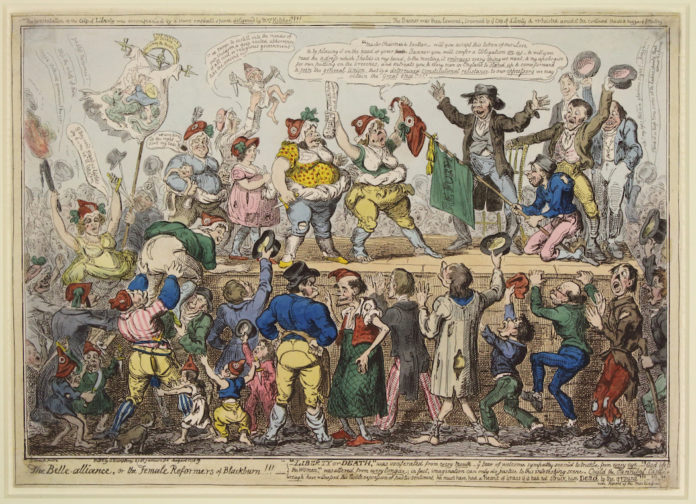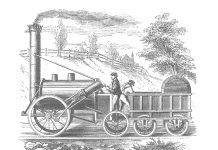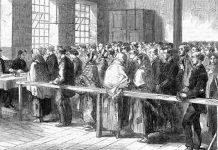The role of women at the Peterloo Massacre in Manchesterwill be explored in People’s History Museum’s upcoming exhibition, Disrupt? Peterloo and Protest which opens on 23 March.
Numbering around one in eight, many accompanied by their children, women were present not only on the ground amongst the 60,000 protestors,they were also represented on the hustings at the heart of the gathering.
Jenny Mabbott, Head of Collections & Engagement, says, “Ahead of International Women’s Day (Friday 8 March) we are reflecting on the stories of the women at Peterloo and how they will be explored in our new exhibition. That women made up a disproportionately high number of the casualties, around one in four, yet represented only a relatively small percentage of protestors, says much of the struggles that women would have to endure to seek representation for many, many years to come.”
Disrupt? Peterloo and Protest explores the impact and legacy of the Peterloo Massacre 200 years on through a number of key objects, including original period artefacts, brought together for the first time. The story of women is visually represented by Mrs Mabbott’s dress, a piece which will go on public display for the first time when the exhibition opens on 23 March 2019.
Mrs Mabbott’s own story reflects the chaos that ensued in the city when the Manchester and Salford Yeomanry and local government forces charged the crowds, with such force that 18 people would lose their lives and around 700 suffer injury.
Research suggests that Mrs Mabbott, a confectionary shop owner who resided on Bridge Street in the city centre, got caught up in the violence of the day, rather than being an active participant in the protest. Her dress, made from fawn corded silk with a white linen lined bodice and sleeves, was donated to Manchester Art Gallery in 1948, from whom it is on loan.
One of the most high profile women at Peterloo was Mary Fildes, President of the Manchester Female Reform Society,who stood with the speakers at the hustings holding a banner with the liberty cap on the pole. Like most women present, the women that she led were at Peterloo not to demand the vote for themselves, but to seek representation for their household whether through their husbands or fathers. It would be a number of years before women began to campaign for the right to vote for themselves.
Women at Peterloo who were active in the different reform movements were dressed distinctly in white cotton as a symbol of their virtue. This was in stark contrast to the cartoon The Belle-alliance or the Female Reformers of Blackburn!!! that was published just four days before, in which the women are caricatured as bawdy and disreputable.
This George Cruikshank print can be seen on display in the main galleries at People’s History Museum, and is one of many createdover the subsequent century by different anti-suffragists that would cast dispersions on the role and conduct of women.
Historian Helen Antrobus says, “The dresses of the women at Peterloo were both emotionally and physically restricting; not only did they delay escape, but they marked out political women, the usurpers of society, for attack. Indeed, eyewitness reports suggest that women were explicitly targeted during the attacks by the yeomanry, a fact that is supported by the statistics. To be a political woman took courage, and the women of Peterloo would go on to champion Chartism, theabolition of slavery, and eventually, women’s suffrage.”
Margaret Downes, Mary Heyes and Martha Partington are all included in the list of those who lost their lives at Peterloo.
People’s History Museum is open seven days a week from 10.00am to 5.00pm, Radical Lates are on the second Thursday each month, open until 8.00pm. The museum is free to enter with a suggested donation of £5. To find out about visiting the museum, its full exhibition and events programme visit phm.org.uk.







